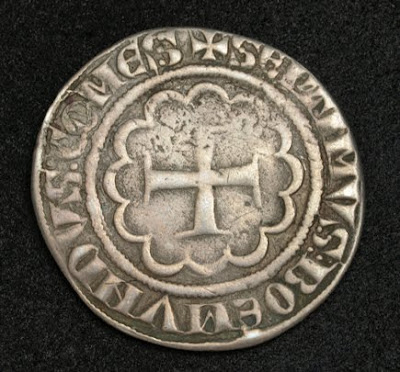 |
| Crusader Coinage |
 |
| Coins from Crusader Tripoli Lebanon |
Obverse: Triple towered two story gateway, in a circle of twelve arches.
Legend: + CIVITAS :. TRIPOLIS :. SYRIE
Reverse: Cross in a circle of twelve arches.
Legend: + SEPTIMVS :. BOEMVNDVS :. COMES
Reference: Schlumberger IV:21. R!
Mint Place: Tripoli (Crusader City State).
Mint Period: 1275-1287 AD.
Diameter: 25 mm
Weight: 3.73 gram of silver
Bohemond VII of Tripoli (1261 – October 19, 1287) was the count of Tripoli and nominal prince of Antioch from 1275 to his death. The only part left of the once great Principality of Antioch was the port of Latakia. He spent much of his reign at war with the Templars (1277–1282).
The County of Tripoli (1109–1289) was the last Crusader state founded in the Levant, located in what today are parts of western Syria and northern Lebanon, where exists the modern city of Tripoli. The Crusader state was captured and created by Christian forces in 1109, originally held by Bertrand of Toulouse as a vassal of Baldwin I of Jerusalem. The County of Tripoli later became a substate of the Principality of Antioch in the 13th century. In the mid-13th century, its leader Bohemond VI, under the influence of his father-in-law Hetoum I of Cilician Armenia, swore vassalage to the Mongol Empire, and contributed troops to the Mongol conquests in the region. In retaliation, the Sultan Qalawun, of the Muslim Mamluks in Cairo, attacked and destroyed both Tripoli and Antioch, absorbing the territories back into the Islamic Empire in the late 13th century. The Fall of Tripoli took place in 1289.